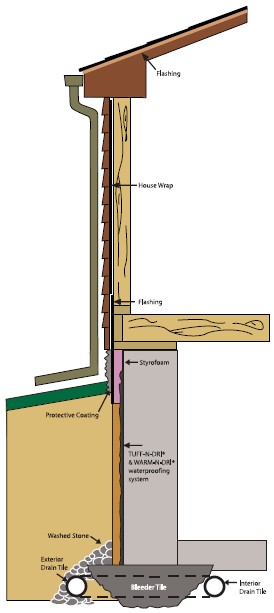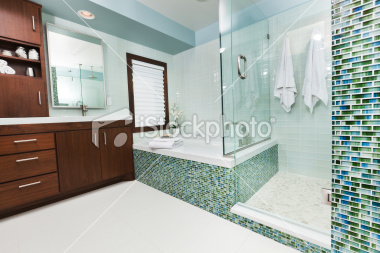Your Home: Keeping Water Out Starts At The Top

Keeping water out of your home is critical to a healthy home in terms of reduced damage from water dams, mold…very often the problem starts at the top—the roof—where water isn’t being controlled.
Keeping your home and basement dry is really a team effort. Proper landscaping (lawn grade, trimmed overhanging trees, clean gutters…) and all of the other steps contribute to keeping your home dry and healthy. Frank Acker, Zander Solutions of Verona
Frank’s 6 Steps To Controlling Water FromThe Top Down
Start in the gutter—Frequently, water that becomes a problem near the foundation actually starts up at the gutters. Clogging is the most prevalent gutter issue and can be alleviated by ensuring the gutters remain clear of debris, have the correct amount of pitch (as determined by a professional installer) and are adequately sized. Frequent cleaning is the key to ensuring proper water flow from the roof to the downspouts. Likewise downspouts need to extend a minimum of 4 feet from the side of the structure and onto a properly graded landscape (away from the structure). Splash blocks and underground drain tile systems can help add relief to the drainage area as well.
Walls are like skin—Like adding the underlayment on the roof, the same is true for walls—always layer membrane material from the ground up, overlapping generously. Popular vinyl siding is thicker than aluminum or steel and actually allows more space behind it for water to penetrate. While a waterproof and windproof house wrap (like Tyvek®) is always recommended it is necessary on home sided with vinyl. But proper installation is critical. It shouldn’t be stapled or tacked, rather it should be taped with some special tape.
A meeting of wall and foundation—The wall meets and joins the foundation at the sill plate—an area that is frequently compromised with moisture from plants growing too close to the home, penetrating insects etc., that could all spell disaster if the sill plate begins to decompose. Siding should extend beyond the sill plate by at least one inch, but covering the sill plate with a membrane is the best way to keep water out.
Foundation walls—Once the foundation is backfilled, the walls are completely susceptible tomoisture penetration. Therefore, before backfilling the foundation, the exterior of the wall needs to be coated with a waterproofing membrane (like Tuff-N-Dri® from Zander) and even have a 2" bituthane material applied to that for additional protection from both water and to act as an insulating barrier.
Footing drain tiles—At the very base of the home properly installed drain tiles (both interior and exterior) are your final protections against water invasion. Whether water seeps up from under the basement floor due to hydrostatic pressure or if wall cracks allow leakage from the outside, these drain tiles provide a channel for water to properly drain.
Properly graded landscaping — Positively-pitched landscape grading (away from the structure) is one of themost frequently overlooked aspects of keeping your structure dry. Settling of dirt against the foundation wall can create surface pockets that collect water and allow it time to seep along the basement wall looking for an opening. Be sure that all pitches drain away from the structure and that plants and shrubs are far enough from the structure not to “hold” moisture close by.






